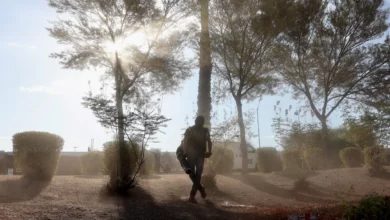
Envoys from 195 nations zeroed in Saturday on a historic climate rescue pact after host France released a final draft for ministers to peruse and adopt.
These are the key points of the envisaged Paris Agreement:
The challenge
The document identifies climate change as "an urgent and potentially irreversible threat to human societies and the planet".
It notes "with concern" that countries' existing pledges to curb greenhouse-gas emissions would fail to meet targets for curbing planetary warming.
The goal
The purpose is to hold global warming to "well below" two degrees Celsius (3.6 degrees Fahrenheit) over pre-Industrial Revolution levels, and 1.5C (2.7F) if possible.
Getting there
The world will aim for climate-altering greenhouse gas emissions to peak "as soon as possible", with "rapid reductions" thereafter.
By the second half of this century, there must be a balance between the emissions from human activity like energy production and farming, and the amount that can be captured by natural or technological "sinks" like carbon-absorbing forests or carbon storage plants.
Unlike previous drafts, the text sets no specific target dates and avoids the term "carbon neutrality" which was vehemently opposed by fossil fuel-producing giants like Saudi Arabia.
Burden-sharing
Developed countries, which have polluted for longer, shall take "the lead" by taking on absolute emissions cuts. Developing nations which still need to burn coal and oil to power growing populations, are encouraged to enhance their efforts and "move over time" to cuts.
Rich countries are required to provide support for developing nations' emissions cuts.
Tracking progress
In 2018, two years before the agreement enters into force, countries will take stock of the overall impact of what they are doing to rein in global warming, and revisit their carbon-curbing plans in 2020.
Some countries had submitted their first round of targets until 2025, and others until 2030.
Once the agreement takes effect, the collective impact of countries' efforts will be reviewed at five-year intervals from 2023. The outcome will inform countries in "updating and enhancing" their pledges.
Finance
Developed countries "shall provide" funding to help developing countries make the costly shift to green energy and shore up their defenses against climate change impacts like drought and storms.
Funding must be scaled up, and the agreement says rich nations must report every two years on their finance levels — current and intended.
Moved from the legally-binding, core agreement to a separate non-binding "decision section", the document refers to the US$100 billion a year that rich countries had pledged to muster by 2020 as a "floor". The amount must be updated by 2025.
Climate damage
Low-lying island nations and poor countries most at risk from climate change-induced sea level rise and other impacts, have won recognition of the need for "averting, minimizing and addressing" losses suffered.




